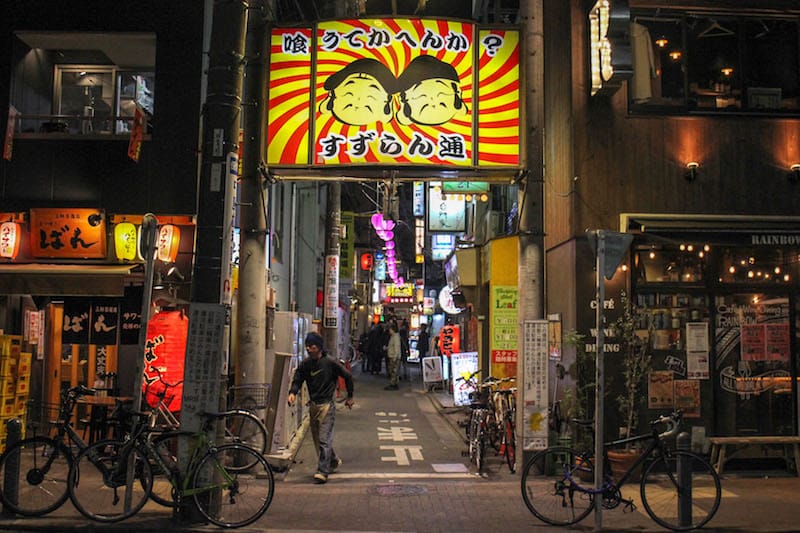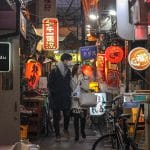As the calendar year turns over, we’ve grown accustomed to the barrage of lists telling us where to travel during the next 12 months. Oftentimes these places are a country or even a whole region – you could spend an entire year exploring just one of the locations listed and still barely make a dent.
We like to travel on a smaller scale. Forget countries and cities, for us the neighborhood is the ideal unit of exploration. Celebrating neighborhood life and businesses is, of course, essential to what we do as Culinary Backstreets. Since our founding in 2012, we’ve been dedicated to publishing the stories of unsung local culinary heroes and visiting them on our food walks, particularly in neighborhoods that are off the beaten path.
Last January, we declared 2018 as “The Year of the Neighborhood,” and what a fruitful year it was. We had our fair share of fresh experiences and were also able to contribute to the economies of neighborhoods otherwise neglected by the tourism industry. Tourism is an important economic force in many cities, as it should be, but if it is not dispersed responsibly, it can devastate the urban ecosystem, one that’s based on the sound health of all of a city’s neighborhoods.
With that in mind, we are happy to again focus on neighborhoods off the main tourist trail in 2019, as well as the people and places that keep them going. Below is a compilation of the less-visited areas that our correspondents are planning to explore this year:

Tokyo: Sangenjaya
 Sangenjaya – while largely off the tourist radar – has won the affection of many Tokyoites, who know that its sprawling streets and alleyways promise a hodgepodge of bars, eateries and ramshackle shops.
Sangenjaya – while largely off the tourist radar – has won the affection of many Tokyoites, who know that its sprawling streets and alleyways promise a hodgepodge of bars, eateries and ramshackle shops.
Its name translates as “three tea houses” and it was indeed home to three of them. Back in the Edo Period (1603–1868), the area was situated where a major road divided into two popular pilgrimage routes, making it a popular place for a rest stop. Nowadays it’s bisected by a major highway and easily identifiable by the orange and aptly named “Carrot Tower” that houses a free viewing platform with good views over Tokyo and further west towards Mount Fuji.
Just a four-minute train ride west of the fashionable Shibuya neighborhood, much of the appeal of Sangenjaya lies in its ability to absorb modern trends from its neighbor while retaining a charmingly scruffy feel of olden times. A stone’s throw from the station is Suzuran Alley with an illuminated sign inviting hungry passers-by to grab a bite to eat. The surrounding area hides a network of alleys where smoky yakitori (grilled chicken) joints abut pokey standing bars with scrawled menus on the walls (try Sai for great sake) and sleek izakaya (a pub-style establishment) with gleaming wooden counters that target courting couples.
Daytime reveals rows of shops selling everything from household essentials to secondhand knick-knacks. Chazawa, the major shopping street, is even closed to traffic between 1 and 5 p.m. on Sundays, allowing pedestrians to amble at leisure, perhaps picking up a coffee at Obscura Coffee Laboratory or a pastry from Boulangerie Bonheur as they go. Tiny family-run set-ups sell traditional matcha bowls only a couple of streets away from where Tokyo Saryo is riding the third-wave tea trend, offering cups of single-origin green tea in a chic minimalist room. Zen is a ramen joint that promises organic vegetables sourced from Kochi Prefecture – perhaps a nod to the more health conscious crowd, although it’s open until 6 a.m., which suggests it also hopes to pull in late-night drinkers.
Regional specialties abound: at Jajaoiken, you’ll find jajamen, miso-flavored noodles from Morioka in the north, whereas the izakaya Gassan focuses on unusual cuisine from Yamagata Prefecture. But there’s also plenty of international fare to be had. There is the ever-popular Indian restaurant Shiva Curry Wara, whose founder regularly goes to India to take part in cooking classes, and the pricier, highly-rated PepeRosso, which serves up Italian fare, including homemade pasta. A short walk from both is Paopao, famous for its takeout Chinese steamed buns.
With such a medley, a simple stroll can easily become a half-day adventure. Ever evolving, Sangenjaya is likely to be your cup of tea – or three. – Phoebe Amoroso
Click here to read the full neighborhood guide.
Published on January 05, 2019
Related stories
January 14, 2019
Barcelona | By Culinary Backstreets
BarcelonaAs the calendar year turns over, we’ve grown accustomed to the barrage of lists telling us where to travel during the next 12 months. Oftentimes these places are a country or even a whole region – you could spend an entire year exploring just one of the locations listed and still barely make a dent.…
January 14, 2019
Naples | By Culinary Backstreets
NaplesAs the calendar year turns over, we’ve grown accustomed to the barrage of lists telling us where to travel during the next 12 months. Oftentimes these places are a country or even a whole region – you could spend an entire year exploring just one of the locations listed and still barely make a dent.…
January 14, 2019
Porto | By Culinary Backstreets
PortoAs the calendar year turns over, we’ve grown accustomed to the barrage of lists telling us where to travel during the next 12 months. Oftentimes these places are a country or even a whole region – you could spend an entire year exploring just one of the locations listed and still barely make a dent.…













































































